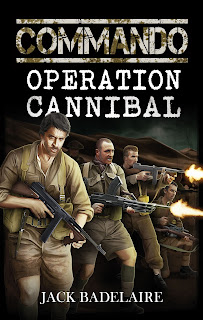I also know that in 2014, I need to step up my game. I need to either be writing, editing, or in some other way working on one project or another every single day. It doesn't matter if I work for ten minutes or a full, eight-hour day - I've got to do it. Right now, I'm in a plane and I'm taking off from the runway, and I've got to push those throttles against the stops. Either I gain enough airspeed and altitude to clear the trees at the end of the runway, or I'm going to stall out and crash. This is a vulnerable time for me, and I know the only way to make it through is to write and close, write and close, write and close. I have to remember - coffee is for closers.
A year ago I posted this article on how I need to always be closing in 2013. I didn't think my goals were unreasonable, but I failed to achieve some of them. Why? Because in April, a fluke of chance right as Operation Bedlam went live meant I made quite a bit of money over the spring and summer, and that money made me lazy. Instead of writing Operation Cannibal in two months, it took me five. Instead of getting Spiders and Flies out of my desk drawer in 2013, I'm going to have to get it published in January. I did write another short story, but it wasn't the one I wanted. I let a small taste of success go to my head, and my hands got soft. I've got to build up my calluses again, and I need a challenge to keep driving me forward.
So in 2014, I'm throwing down the gauntlet - not just for myself, but for all of you, too. Here's how it's going to work:
- Go and look at your bookshelves. Find a book or two that you've read, in a genre you like, and re-read them. Right now. You're going to write a short story in the spirit of those books.
- Put a dollar bill in a coffee can. This can is your Cover Can. Put another dollar in that can every day.
- Write at least 300 words a day, every day, for six weeks. That's 12,600 words. If you fall a little short or run a little over, that's fine. The goal is to write a short story between 10,000 and 15,000 words. But seriously, at least three hundred, you big sissy.
- Once the story is finished, over the next four weeks you're going to get (at least) four people to read that short story and provide feedback. Two of them need to be anal retentive grammar Nazis who'll slap you senseless for every little typo and screw up. Two of them need to be the sort of folks who read mostly for pleasure and like the kind of fiction you're writing - they represent the people who'd pay money for your story.
- Once those four weeks are up, spend the next two weeks editing the story, factoring in all the grammar and spelling edits, any suggestions that seem to make sense to you, and ignoring some that your gut tells you don't work. Remember, at the end of it all, it's your story.
- After these twelve weeks, your story is done. Stop mucking with it and tweaking and fiddling. At this point, there's as much a chance of you breaking something that isn't broken as there is of you finding something that could use some improvement. Perfection is the enemy of Good Enough.
- Return to Step 1 and begin this process over again.
- When you're not working on the next short story, take the 84 dollars you've got in your Cover Can and find a cover artist. DeviantArt is one option, but there are a million others. You can get a good, professional, embarrassment-free cover for 80-100 dollars. Go forth and do so now.
- Read up on how to format your short story for the Kindle, and make it happen. I've gotten to the point where I can format a Word document for the kindle in about 10 minutes, minus proof-checking. As long as you keep things simple, you can too.
- If you aren't signed up for KDP already, make an account, then create a new title, fill in all the relevant details, upload your new cover and that Kindle-ready file, then hit Publish.
- Do this four times before January 1st, 2015.
Anyone care to join me?

